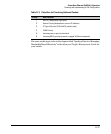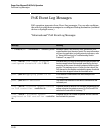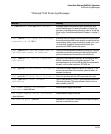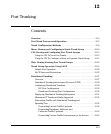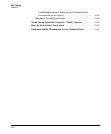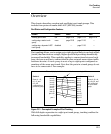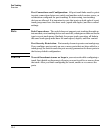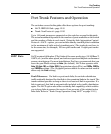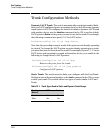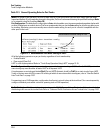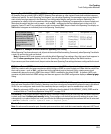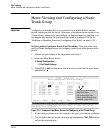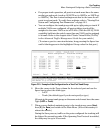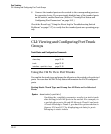
Port Trunking
Port Trunk Features and Operation
Port Trunk Features and Operation
The switches covered in this guide offer these options for port trunking:
■ LACP: IEEE 802.3ad—page 12-19
■ Trunk: Non-Protocol—page 12-36
Up to 144 trunk groups are supported on the switches covered in this guide.
The actual maximum depends on the number of ports available on the switch
and the number of links in each trunk. (Using the Link Aggregation Control
Protocol—LACP—option, you can include standby trunked ports in addition
to the maximum of eight actively trunking ports.) The trunks do not have to
be the same size, for example, 100 two-port trunks and 11 eight-port trunks
are supported.
LACP Note LACP requires full-duplex (FDx) links of the same media type (10/100Base-T,
100FX, etc.) and the same speed, and enforces speed and duplex conformance
across a trunk group. For most installations, ProCurve recommends that you
leave the port Mode settings at Auto (the default). LACP also operates with
Auto-10, Auto-100, and Auto-1000 (if negotiation selects FDx), and 10FDx, 100FDx,
and 1000FDx settings. (The 10-gigabit ports available for some switch models
allow only the Auto setting.)
Fault Tolerance: If a link in a port trunk fails, the switch redistributes
traffic originally destined for that link to the remaining links in the trunk. The
trunk remains operable as long as there is at least one link in operation. If a
link is restored, that link is automatically included in the traffic distribution
again. The LACP option also offers a standby link capability, which enables
you to keep links in reserve for service if one or more of the original active
links fails. Refer to “Trunk Group Operation Using LACP” on page 12-19.)
12-5



